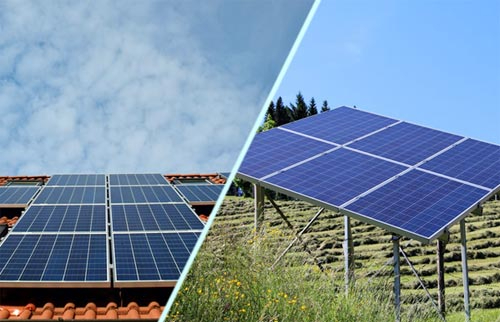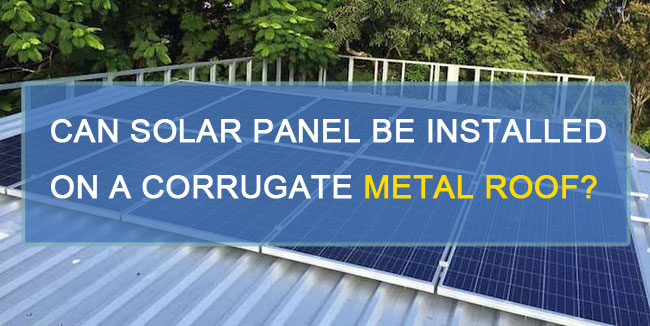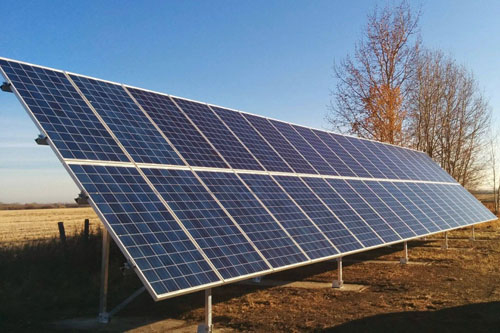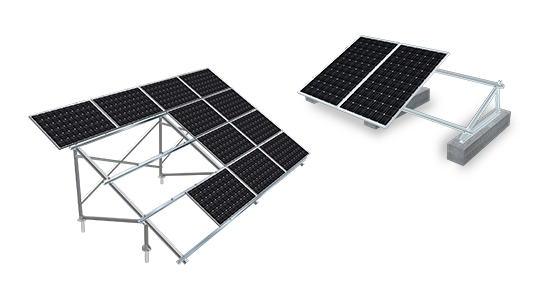-
 When deciding on solar installations for your business, farm, or home, it's helpful to understand both the advantages and potential setbacks of each option. We provide detailed comparisons of roof versus ground-mounted solar panels, including installation methods, costs, benefits, and possible disadvantages, to help you decide wisely.
When deciding on solar installations for your business, farm, or home, it's helpful to understand both the advantages and potential setbacks of each option. We provide detailed comparisons of roof versus ground-mounted solar panels, including installation methods, costs, benefits, and possible disadvantages, to help you decide wisely. -
 A mounting structure serves as the backbone of your solar system. It securely anchors solar panels across different settings, such as on roofs, parking areas, or bodies of water. If roof space proves limited or unsuitable, you can consider using pole-mounted solar panels on the ground.
A mounting structure serves as the backbone of your solar system. It securely anchors solar panels across different settings, such as on roofs, parking areas, or bodies of water. If roof space proves limited or unsuitable, you can consider using pole-mounted solar panels on the ground. -
 For those with corrugated metal roofs, you can still mount solar panels using brackets. These brackets secure direct embedment into the underlying structure by penetrating through the corrugated metal sheets, ensuring a highly secure fixation. Mibet provides mounting bracket kits for solar panels installed on corrugated or trapezoidal metal roofs, such as hanger bolts.
For those with corrugated metal roofs, you can still mount solar panels using brackets. These brackets secure direct embedment into the underlying structure by penetrating through the corrugated metal sheets, ensuring a highly secure fixation. Mibet provides mounting bracket kits for solar panels installed on corrugated or trapezoidal metal roofs, such as hanger bolts. -
 Standing seam metal roofs are versatile, watertight structures suitable for commercial, industrial, and residential buildings. These roofs support solar energy generation through integrated PV technology, with panels that attach using non-penetrative solar clamps. This setup enhances energy efficiency without damaging the roof, ensuring a robust and sustainable roofing solution.
Standing seam metal roofs are versatile, watertight structures suitable for commercial, industrial, and residential buildings. These roofs support solar energy generation through integrated PV technology, with panels that attach using non-penetrative solar clamps. This setup enhances energy efficiency without damaging the roof, ensuring a robust and sustainable roofing solution. -
 Installing solar panels on metal roofs with standing seams is straightforward. You can easily mount the modules directly onto the seams, eliminating the need to drill into the roof. However, if your roof is corrugated, the profile lacks the necessary strength to support the mounting system on its own. In this case, you must secure the brackets using screws.
Installing solar panels on metal roofs with standing seams is straightforward. You can easily mount the modules directly onto the seams, eliminating the need to drill into the roof. However, if your roof is corrugated, the profile lacks the necessary strength to support the mounting system on its own. In this case, you must secure the brackets using screws. -
 Metal roofs demonstrate resilience against diverse weather conditions. They effectively withstand heavy winds, rainfall, hailstorms, and fires, offering protection in high-altitude regions prone to natural disasters. This durability translates into long-term cost savings, as frequent roof replacements become unnecessary.
Metal roofs demonstrate resilience against diverse weather conditions. They effectively withstand heavy winds, rainfall, hailstorms, and fires, offering protection in high-altitude regions prone to natural disasters. This durability translates into long-term cost savings, as frequent roof replacements become unnecessary. -
 Installing PV modules necessitates a robust mounting system. To ensure long-term stable energy production, these mounts require components to maintain stability. Mid clamps and end clamps are important auxiliary accessories. Keep reading and this blog post will give you the details
Installing PV modules necessitates a robust mounting system. To ensure long-term stable energy production, these mounts require components to maintain stability. Mid clamps and end clamps are important auxiliary accessories. Keep reading and this blog post will give you the details -
 A ground-mounted solar system is a structured frame fixed on the ground that supports PV panels for power generation. There are mainly two types: fixed tilt and tracking systems. Fixed tilt systems offer stability and easy installation, while tracking systems adjust panel positions to follow the sun, maximizing energy capture. Although tracking systems can boost energy production by roughly 20%, they require more engineering and pose potential risks, such as damage from high winds or increased m
A ground-mounted solar system is a structured frame fixed on the ground that supports PV panels for power generation. There are mainly two types: fixed tilt and tracking systems. Fixed tilt systems offer stability and easy installation, while tracking systems adjust panel positions to follow the sun, maximizing energy capture. Although tracking systems can boost energy production by roughly 20%, they require more engineering and pose potential risks, such as damage from high winds or increased m


